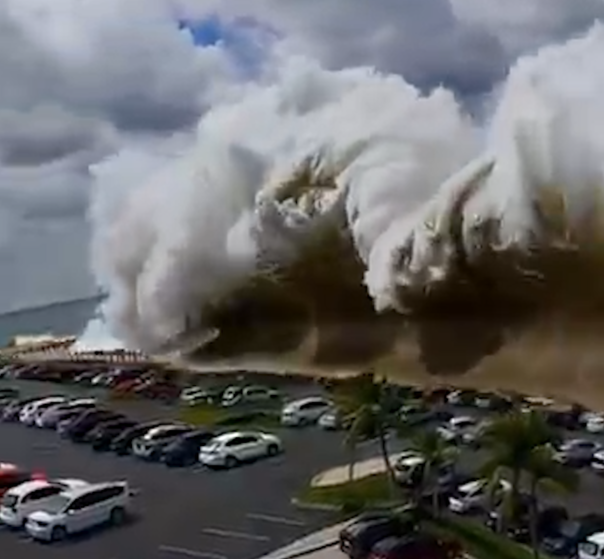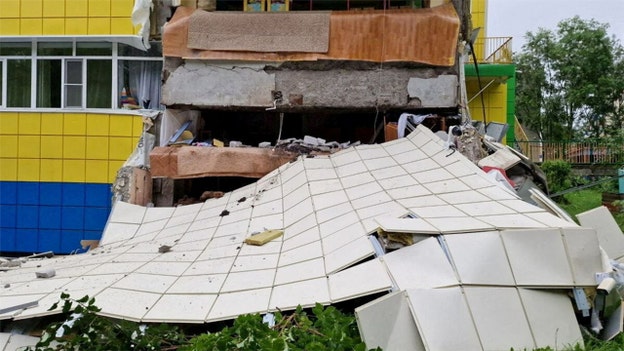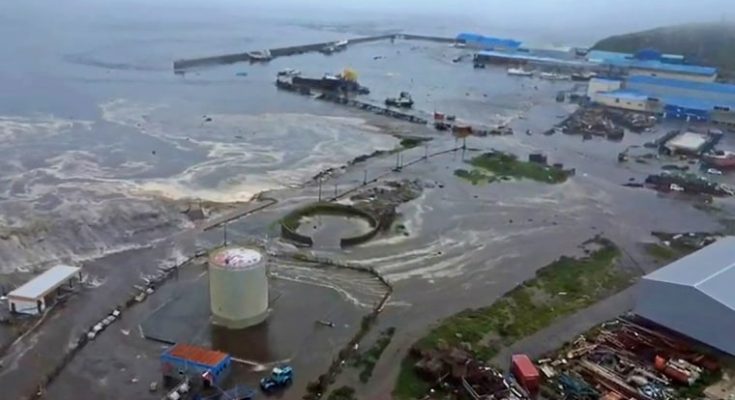Alaska Reels from Devastating 8.2 Magnitude Earthquake and Subsequent Tsunami
Alaska experienced a catastrophic event early this morning: a powerful undersea earthquake measuring 8.2 on the Richter scale. This seismic event, striking at approximately 2:30 a.m. local time, sent shockwaves – literally and figuratively – through the state, triggering widespread tsunami warnings and urgent evacuations.
The Earthquake’s Impact: A Megathrust Event
Epicenter and Depth
The United States Geological Survey (USGS) pinpointed the epicenter roughly 56 miles (91 kilometers) southeast of Perryville, Alaska, at a depth of approximately 29 miles (46 kilometers) beneath the ocean’s surface. This location and depth are consistent with a megathrust earthquake – a particularly dangerous type of quake resulting from the sudden, forceful displacement of tectonic plates along subduction zones. These events are notorious for their potential to generate significant tsunamis.
Aftershocks and Continued Seismic Activity

The initial quake was followed by a series of powerful aftershocks, including a notable 6.1 magnitude tremor. This continued seismic activity further intensified the already critical situation and contributed to the prolonged tsunami advisory issued for Alaska’s southern coast. The lingering tremors and potential for further seismic activity keep emergency crews on high alert.
Swift Response to the Tsunami Threat
Immediate Warnings and Evacuations
The National Tsunami Warning Center (NTWC) reacted swiftly, issuing tsunami warnings for substantial portions of Alaska’s coastline, including key areas like Kodiak Island, Homer, Sand Point, and Chignik Bay. The urgency of the situation prompted immediate evacuation orders for residents in low-lying coastal regions, emphasizing the life-threatening risk of impending tsunami waves.

Wave Heights and Impact
Within 90 minutes of the initial earthquake, tsunami waves began impacting the coast, with some reaching alarming heights of up to 20 feet in certain locations. While the most severe impact was concentrated in less densely populated areas, the potential for further damage remains a serious concern for authorities.
Assessing the Damage and Ongoing Rescue Efforts
Casualties and Infrastructure Damage

Thankfully, as of this writing, no fatalities have been officially reported. However, injuries, significant flooding, and substantial property damage have been confirmed in towns such as Kodiak and Sand Point. Preliminary reports indicate considerable damage to docks and smaller vessels, many of which were either damaged or swept away by the powerful tsunami waves.
Emergency Response and Coordination
A coordinated and robust emergency response is underway. Teams from the Alaska Division of Homeland Security and Emergency Management (DHSEM), along with local government agencies, are working tirelessly on evacuation efforts, providing shelter and support to displaced residents, and conducting damage assessments. Search and rescue teams have been deployed to remote areas facing communication disruptions.
Community Response and Official Statements
Public Safety Measures and Evacuation Procedures
Local governments immediately activated emergency sirens and broadcast systems to alert the public. In larger population centers like Anchorage and Kodiak, emergency personnel conducted door-to-door evacuations, guiding residents to designated tsunami safety zones. Public shelters were opened across multiple towns to accommodate those displaced by the event. Organizations such as the American Red Cross are providing crucial support with food, water, and temporary housing.
Official Statements and Support
Alaska Governor Mike Dunleavy issued a public statement confirming the mobilization of all available state resources to address the crisis. The governor’s office is maintaining close contact with FEMA and other federal agencies to secure additional aid as needed.
National and International Monitoring
Pacific-Wide Monitoring and Alerts
The Pacific Tsunami Warning Center (PTWC) is diligently monitoring sea-level changes throughout the Pacific Ocean. While no tsunami alerts have been issued for the U.S. West Coast, Hawaii, or other Pacific nations at this time, advisories remain in place for certain offshore areas as a precautionary measure.

Scientific Collaboration and Coastal Assessment
Experts from the National Oceanic and Atmospheric Administration (NOAA) are collaborating with USGS scientists to track aftershocks and analyze the earthquake’s broader geological implications. The U.S. Coast Guard has deployed aerial reconnaissance to assess coastal damage and aid in maritime rescue operations. Ports in high-risk areas have been temporarily closed to permit thorough structural inspections and safety evaluations.
Alaska’s History with Earthquakes and Preparedness
Alaska’s location along the Pacific Ring of Fire makes it highly susceptible to seismic activity. While thousands of tremors occur annually, most are minor. However, catastrophic events like the 1964 Great Alaska Earthquake (magnitude 9.2) underscore the importance of robust earthquake preparedness and resilient infrastructure planning. Today’s earthquake serves as a stark reminder of the region’s vulnerability and the ongoing need for improved preparedness measures.
Staying Safe and Informed
Residents in tsunami-prone areas are urged to remain vigilant and heed official warnings. Stay away from coastal areas until official all-clear signals are issued, monitor updates from trusted sources (National Weather Service, USGS, and state emergency offices), and comply with all evacuation orders and road closures. Maintaining emergency supplies and accounting for family members are also critical steps. Consider subscribing to the Wireless Emergency Alert (WEA) system and local emergency notification services for real-time updates.
Conclusion: A Continuing Emergency
This devastating earthquake and ensuing tsunami have created a large-scale emergency requiring a sustained and comprehensive response. While the region has, thankfully, avoided widespread casualties, the economic and infrastructural toll will likely be substantial. Further updates are expected as recovery efforts unfold. This event underscores the critical need for ongoing seismic preparedness and rapid response capabilities in high-risk regions. We will continue to provide updates as the situation evolves. Stay safe and rely on official sources for the latest information.




